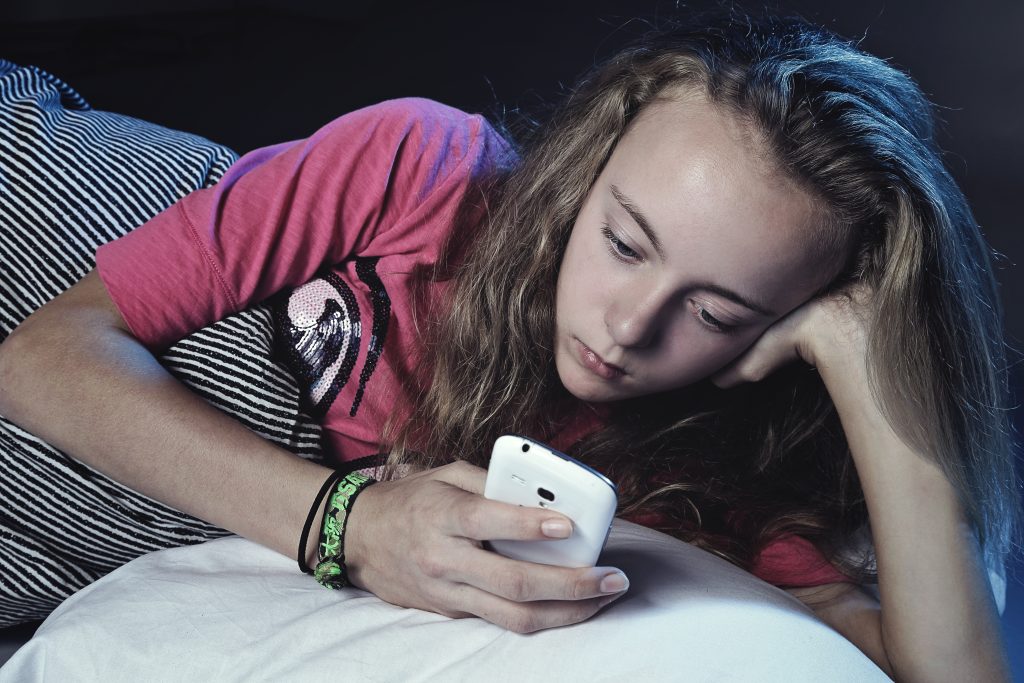
As parents, we probably have asked a million times for our child to put away their devices at the dinner table, turn off their video games to be on time for school, or stop texting their friends. Before they go to bed? We could be reaching into the billions of reminders. Turns out, it’s not just a helicopter parent thing – there’s some solid research behind it.
A recent study from Pennsylvania State University (PSU) took a deep dive into how different types of screen activities affect teens’ sleep. It’s not just any screen time that’s causing trouble; it’s the “interactive” stuff – texting and video games – that seems to be the real sleep disruptor.
The researchers followed 475 adolescents, keeping an eye on their daytime screen habits, including texting, emailing, instant messaging, social media, video gaming, and more passive activities like TV and online video watching. They even utilized wristband accelerometers to track the kids’ movements throughout the day, distinguishing between active and sleep periods.
The result? For every extra hour teens spent playing video games beyond their usual amount, their bedtime got delayed by an average of 10 minutes. That might not sound like much, but it adds up over time.
Teens and Devices
On average, teens were spending about two hours a day communicating with friends through texts and messages. Video gaming took up around 1.3 hours, while passive TV and video watching clocked in at 1.7 hours daily. For that crucial hour before bedtime – 77% of teens were into “interactive” media (think texting and gaming), and 69% were watching TV or movies.
Further, for every hour your teen spends on interactive activities during the day, they fell asleep about 11 minutes later. But if these interactive activities happened in the hour before bed, they ended up hitting the hay 30 minutes later, on average.
Surprisingly, passively watching TV or online videos didn’t seem to mess with their sleep timing as much. So, it looks like it’s not about the screen itself but the kind of activities they’re doing.
With 71 percent of Americans sleeping with their phone in bed or on the nightstand, the blue light from the screens can emit unneeded light that prevents our brains from shutting down. But we should also not be confused with eliminating blue light. Light therapy treats seasonal affective disorder (SAD) and uses blue light.
So, what’s the takeaway? If you’re looking to help your teens catch those Zs, encourage them to wind down with less interactive screen time before bedtime. Aside from the active screen time, it is important to remember that anxiety from drama at school with friends or classes could be the reason they are online in the first place.
Anxiety and Teens
With 8 to 10 hours of sleep needed for a teen, studies show an average of 6.9 hours of sleep by the time they enter senior year: a 1.5-hour decrease from sixth grade. This segment of the population equates to 69 percent of American teens sleeping less than 7 hours of sleep per night.
While the teen brain is in a stage of rapid development, a good night’s rest is critical. As children switch to their teenage years, studies have found a new phenomenon: sleep-phase delay. A teen’s circadian rhythm shifts to a later time causing their internal biological clock to delay. On average, the delay affects falling asleep two hours later than as a child.
Arising in ages 14 to 16, anxiety and depression are commonly linked to insomnia resulting in possible suicidal thoughts, suicide attempts, and substance abuse disorders. A published article in Sleep Medicine studied whether insomnia is related directly to depression, anxiety, and subtypes of each. Generalized anxiety disorder (GAD) along with panic disorder, OCD, separation anxiety, and social phobia were associated with teen night owls.
Maybe suggest a good book or some soothing music instead of those intense video games. It’s all about creating a bedtime routine that sets the stage for a good night’s sleep. Curating a comfortable sleep environment contributes significantly to fostering restful sleep. A cool, dark room with a comfortable mattress and pillows forms the backdrop for an environment conducive to quality rest.
If you have never worked to determine why your teen is tired during the day, consider contacting The Alaska Sleep Clinic for a free 10-minute phone call. Our sleep educators can help determine if a sleep study is necessary or if a consultation with our sleep specialist needs to be scheduled.










